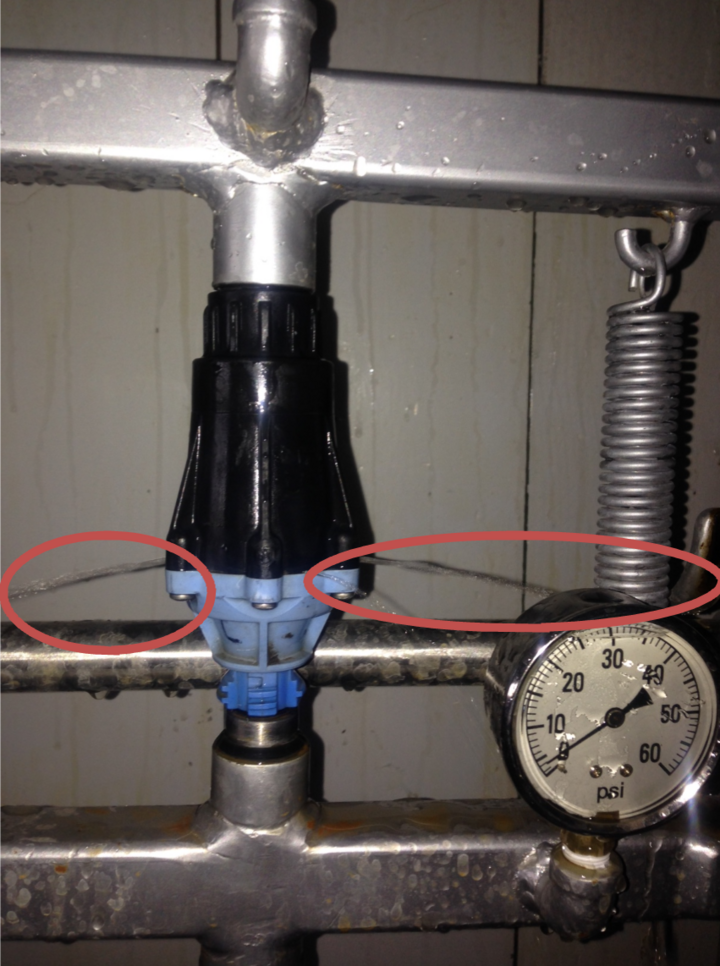Nebraska Extension is offering free testing of center pivot irrigation pressure regulators at the IANR building all three days of Husker Harvest Days September 13-15 in Grand Island.
Irrigators are encouraged to bring two regulators per pivot span for testing. They can be dropped off at the IANR building in the morning and picked up, along with a report, later in the day.
Regulators typically work correctly for many years, but should be inspected regularly for damage or malfunction.
Regulators have a flexible membrane that may rupture over time and lead to water spraying out the sides of the regulator (Figure 1). This spraying may be hidden from view amid the water spraying out of the sprinkler so you may have to look closely to identify the water source.
Spring tension also wears down over time. If the spring becomes weak, it decreases the pressure of the water going through the regulator (Figure 2) and increases the flow rate. Irrigators may see the irrigation system pressure decrease and the gallons per minute increase on a flow meter. These issues may indicate failed regulators. That's why it is important to maintain a good reliable pressure gauge on the system and a good functioning flow meter to monitor flow of irrigation water.
For more information on pressure regulators consult Nebraska Extension NebGuide G888, Flow Control Devices for Center Pivot Irrigation Systems.


